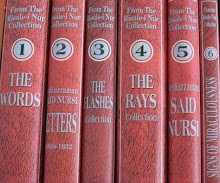Satiety center is a group of cells in the ventromedial hypothalamus that when stimulated suppress a desire for food.
Feeding center is a group of cells in the lateral hypothalamus that when stimulated cause a sensation of hunger.
In the hypothalamus, there are two nerve centers whose actions have opposite effects. If one of these, the feeding center, is stimulated, an animal will eat whether he is hungry or not. If the feeding center is removed, the animal will not eat. The other hypothalamic center is called the satiety center. The satiety center tells the organism when he has had enough to eat. Removal of the satiety center causes an animal to eat continuously and he will grow far beyond his normal size.
When we are subjected to certain stimuli, the hunger-producing center initiates the eating response. When we have eaten enough, the satiety center tells us to stop.
Many of the stimuli that tell the hypothalamus that we are hungry originate in the organs of the body. If the nutrient level of the blood is too low, the hypothalamus is alerted and the feeding center, initiates eating behavior. External stimuli can also initiate eating behavior. The sight, sound, and even the thought of food initiate impulses that eventually reach the feeding center in the hypothalamus. Specific hungers are stimulated by specific deficiencies
October's Reading
4 years ago
